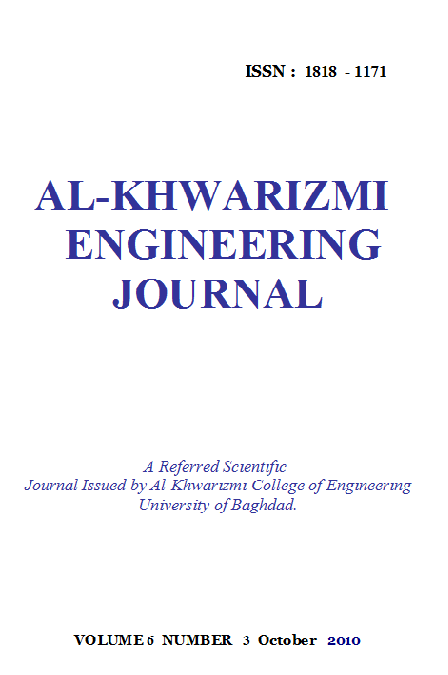Extraction of Monocyclic Aromatic Hydrocarbons From Petroleum Products Using Sulfolane as Industrial Solvent
Abstract
Liquid – liquid equilibria data were measured at 293.15 K for the pseudo ternary system (sulfolane + alkanol) + octane + toluene. It is observed that the selectivity of pure sulfolane increases with cosolvent methanol but decreases with increasing the chain length of hydrocarbon in 1-alkanol. The nonrandom two liquid (NRTL) model, UNIQUAC model and UNIFAC model were used to correlate the experimental data and to predict the phase composition of the systems studied. The calculation based on NRTL model gave a good representation of the experimental tie-line data for all systems studied. The agreement between the correlated and the experimental results was very good
Downloads
References
[2] Chen, J. M.; Fei, W.; Li, Z., "Liquid Liquid Equilibria of Quaternary Systems including Cyclohexane, 1-Heptane, Benzene, Toluene and Sulfolane at 298.15 K", J. Chem. Eng. Data, 45,689-692, 2007.
[3] Lee, S.; Kim, H., "Liquid Liquid Equilibria of the Ternary Systems Sulfolane + Octane + Benzene, Sulfolane + Octane + Toluene and Sulfolane + Octane + p-Xylene at Elevated Temperatures", J. Chem. Eng. Data , 43, 358-361 , 1998.
[4] Briggs, S. W.; Comings, E. W., "Tie-Line Correlation and Plait Point Determination", Ind. Eng. Chem., 35, 411-415 ,1993.
[5] Francies, A. T. "Algebraic Representation of Thermodynamic Properties and Classification of Solutions". Ind. Eng. Chem., 40, 345-348, 2004.
[6] Riddick, J. A.; Bunger, W. B.; Sakano, T. K. Organic Solvents: Physical Properties and Methods of Purification; Wiley-Interscience: New York, 2006.
[7] Rewat, E. R., Elements of Extraction, 4th ed., McGraw-Hill Book Co., New York, 2001.
[8] Wisniak, J.; Tamir, A. Liquid-Liquid Equilibrium and Extraction: A Literature Source Book; Elsevier: Amsterdam, 2000.
[9] Gmehling, J.; Rasmussen, P.; Fredenslund, Aa. "Vapor-Liquid Equilibria by UNIFAC Group Contribution: Revision and Extension 2". Ind. Eng. Chem. Process Des. Dev., 21, 118-127, 1982.
[10] Sorensen, M., Hoen, S., and Nagahama, K., Computer Aided Data Book of Vapor-Liquid Equilibria, Kodansha Limited, Tokyo, 2005.
[11] Anderson, T. F., Abrams, D. S., Grens, E. A., “Evaluation of parameters for Nonlinear Thermodynamic Models”, AIChE J., 24, 20, 1998.
Published
Issue
Section
License
Copyright: Open Access authors retain the copyrights of their papers, and all open access articles are distributed under the terms of the Creative Commons Attribution License, which permits unrestricted use, distribution, and reproduction in any medium, provided that the original work is properly cited. The use of general descriptive names, trade names, trademarks, and so forth in this publication, even if not specifically identified, does not imply that these names are not protected by the relevant laws and regulations. While the advice and information in this journal are believed to be true and accurate on the date of its going to press, neither the authors, the editors, nor the publisher can accept any legal responsibility for any errors or omissions that may be made. The publisher makes no warranty, express or implied, with respect to the material contained herein.












